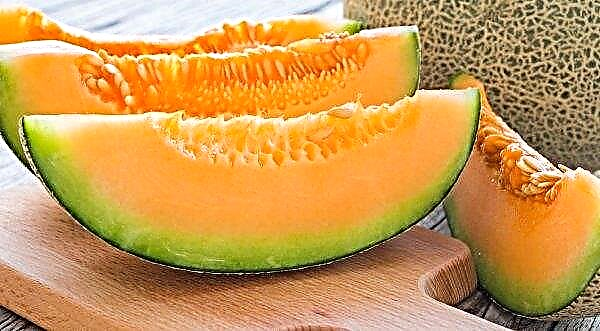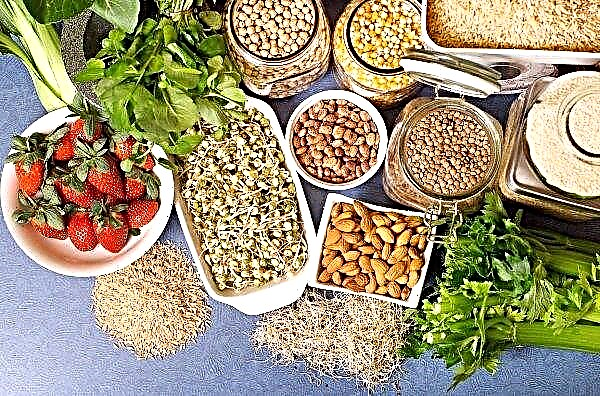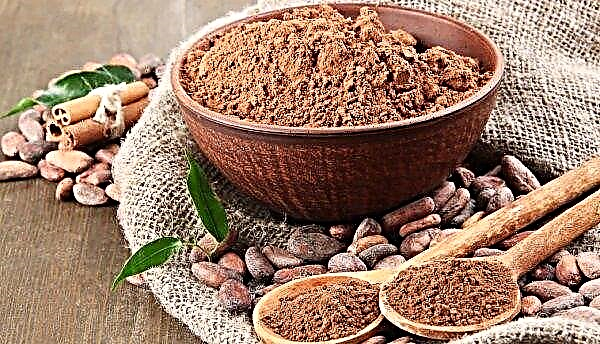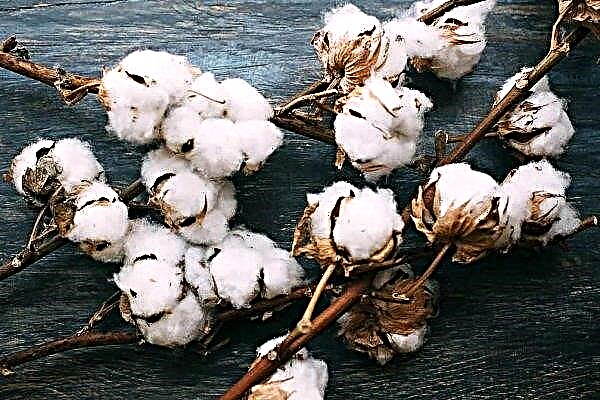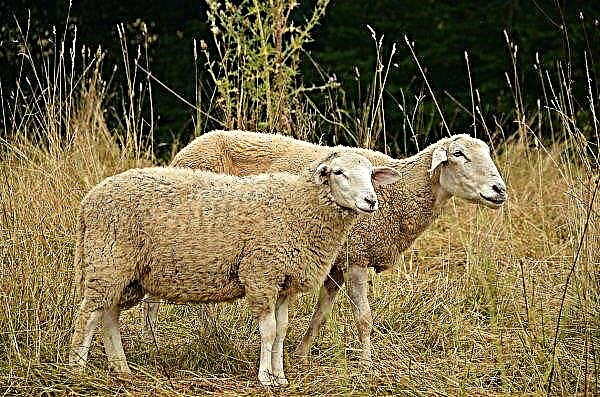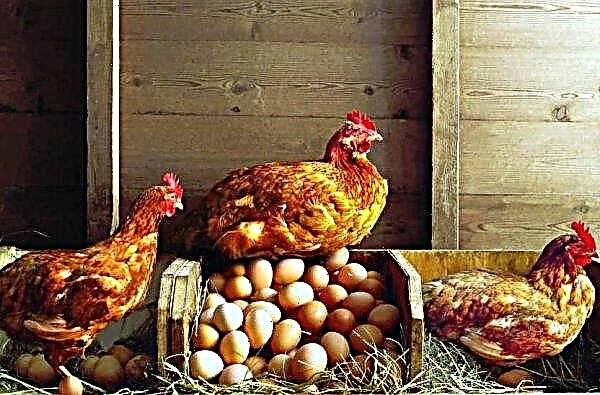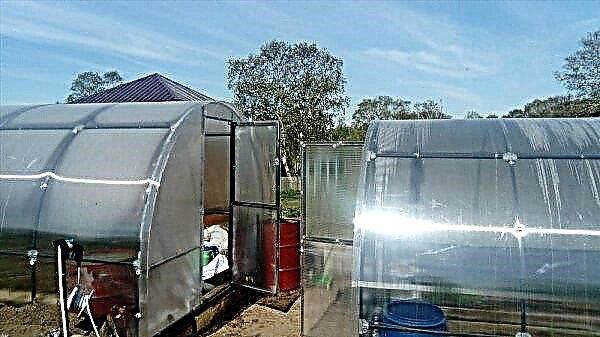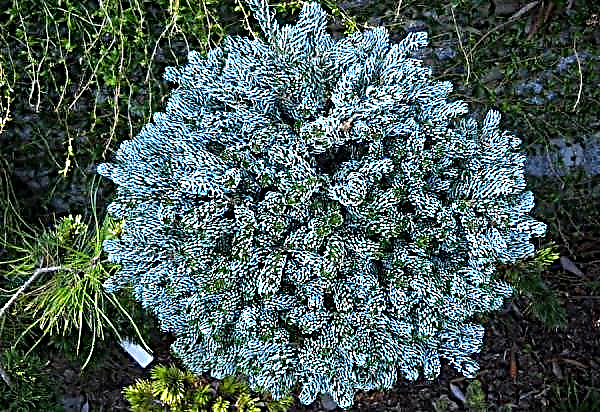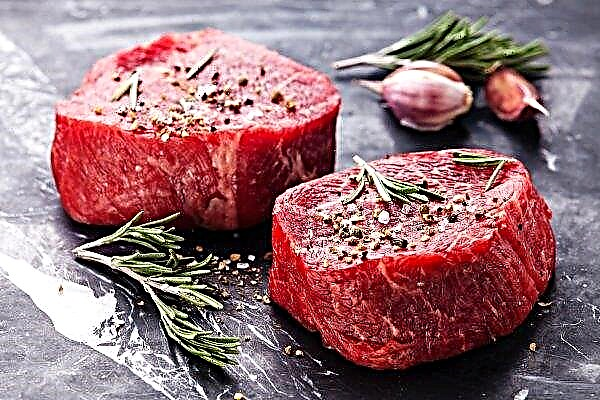Summer residents continue to smoothly move away from the idea of growing vegetables on the site, trying to decorate the local area. Korean fir is classified as an ornamental plant, especially popular for landscaping due to a number of advantages: persistent astringent aroma, medicinal properties, impressively beautiful appearance and much more.
General Description of Korean Fir
Korean fir (lat.Abis Koreana) - a tall evergreen tree with a crown resembling a cone shape, life expectancy is 150 years. A powerful root system helps him to stay in natural conditions in a rocky area, as well as withstand strong gusts of wind. In a young plant, the bark is smooth and quite thin, with a gray tint, but with age, deep cracks appear on it, and the color becomes reddish-brown. The maximum height of this representative is up to 15 m.
The needles are hard and curved in the form of a saber, its shade is dark green, from the bottom you can see two wide silver stripes. The cones are blue or purple-violet, in shape resemble a cylinder, most often their growth is upward.

Reproduction occurs vegetatively or by seed. Pollinated by the wind: when the seeds are ripe, the scales of the cones fall away. However, manually collecting seeds is extremely difficult. Depending on the variety, the annual growth is 3–40 cm.
Common varieties and their characteristics
Gunsang Namu (the Korean name for fir) has many artificially bred varieties that differ in crown shape, suitable climatic conditions, resistance to cold, color of needles, cones etc. A brief description of the most popular varieties will help you choose the best option for you.
Blue magic
Blue Magic (Blue Magic) - a dwarf dense bush growing in one year by 6-10 cm. At the age of ten years, its growth is 1 m with a width of 80-85 cm. Over the next years, the height of the fir can increase to 2.5 m. The shape of the crown resembles a cone or pillow. The main feature of the variety is that when grown in the shade, the color of the needles becomes green-blue, and in good lighting it turns blue with an admixture of silver.
 Suitable for planting separately, in a composition or in a group planting
Suitable for planting separately, in a composition or in a group planting
Green carpet
The height of the Green Carpet (Green Carpet) can reach 3 m and a width of 2 m. The needles on the outside are green and glossy, and on the inside - whitish. The color of the cones at the initial stage varies from green to purple, and during maturation they acquire a brown hue.
Important! Burns may form from direct sunlight.
The variety tolerates drought, but moist soil is preferred.. Crohn in the shape of a hemisphere, frost resistance is average.
 It is recommended to plant on the territory of small personal plots, stony and heather gardens
It is recommended to plant on the territory of small personal plots, stony and heather gardens
Bonsai Blue
Bonsai Blue is distinguished by an interesting growth method: in the first decade it grows in width, acquiring an asymmetric shape, after which an apical shoot is formed. By the first anniversary, the tree reaches a height of ½ m, and a width of 1 m.
The needles are soft and flat, the color is blue-green. Over the year, growth increases by about 5 cm. Resistance to frost is high - it can withstand frosts up to -30 ° C without shelter. It grows both in a sunny place and in partial shade.

Tundra
Tundra (Tundra) - a low-growing variety with a dense and symmetrical cushion-shaped crown formed by dense branches that grow evenly across the entire surface of the base. By the age of 10 years, the growth of the tundra is 40 cm, and the width is 50 cm. The tree develops extremely slowly and is used in the process of creating group compositions and single planting.
Young shoots are bright green, in winter the shade does not change. The plant is unpretentious to conditions and grows well in the shade, however, lack of moisture and sandy soil can adversely affect development. It can be planted both in open ground and in special containers.

Aurea
Grade Aurea (Aurea) - the golden representative. The needles are conical, on young stems they have a pronounced golden hue, but tend to turn green over time.
Important! To get this special golden hue, you need to plant fir in a well-lit place — in shaded areas this quality will not appear.
The plant itself is low - grows up to 10 m, and the width is only 3 m.

Blauer Eskimo
Blauer Eskimo is a species of perennial evergreens that do not differ in high height (up to 0.5 m), 1 m wide. During the year, the tree adds very little in growth - about 3 cm.
The crown is cushioned, the needles are painted gray-green on the outside and white inside, and the cones grow upwards, purple-purple. In natural conditions, you can see this fir in the mountains at high altitude, the climate of the middle zone suits it. Blauer Eskimo is undesirable to plant in a shaded place - this can significantly reduce the life of the plant.

Crystal Kugel
Kristall Kugel (Kristallkugel or Kristalkugel) is an evergreen bush, the crown is flat, symmetrical and rounded. The height reaches a mark of 30–40 cm, and the width is up to 60 cm. The needles are quite soft, its upper part is bright green, and below you can see several silver stripes. Cones are usual for this species, blue-violet, but their arrangement is unusual: they are directed vertically, located at the ends of last year's shoots.
Did you know? Fir is widely used in medicine due to the large amount of vitamin C, as well as tannins.
It grows well in sunny and shaded areas. Fir prefers moist and fertile soil. Another positive quality is good frost resistance.

Use in landscape design
Most often, Korean fir used for landscaping park areas, but because of poor tolerance of gas pollution, they resort to landing during the registration of suburban areas. In addition, it can be used as a shelter for other plants from the wind or a large amount of sunlight.
The tree looks good both in a single landing and in a group - a combination with:
- pine;
- maple;
- larch;
- spruce.
Did you know? Taking the pollen of Korean fir inside, you can normalize the level of stress resistance, strengthen the immune system, and improve sleep.
Korean fir in the design of the site - the main part of the composite composition. Dwarf varieties are placed next to shrubs and perennials covering the soil, against a lawn or alpine garden, next to a gazebo or house. When creating a composition, you can highlight the beauty of fir by planting two thinner or, conversely, rough trees or shrubs nearby.

Despite the fact that this plant is growing slowly, the expectation is worth it: a greenish-blue crown retains its color throughout the winter, and cones with purple fruits last from the beginning of autumn to the end of winter.
All of the above varieties are perfectly combined with the climatic conditions of Russia. The wait for the first few years is worth the appearance of such a beautiful fir that will delight the views of others for a long time. This decoration does not require special care, but during the growing season it is recommended to monitor the soil moisture and, if desired, make fertilizers.

